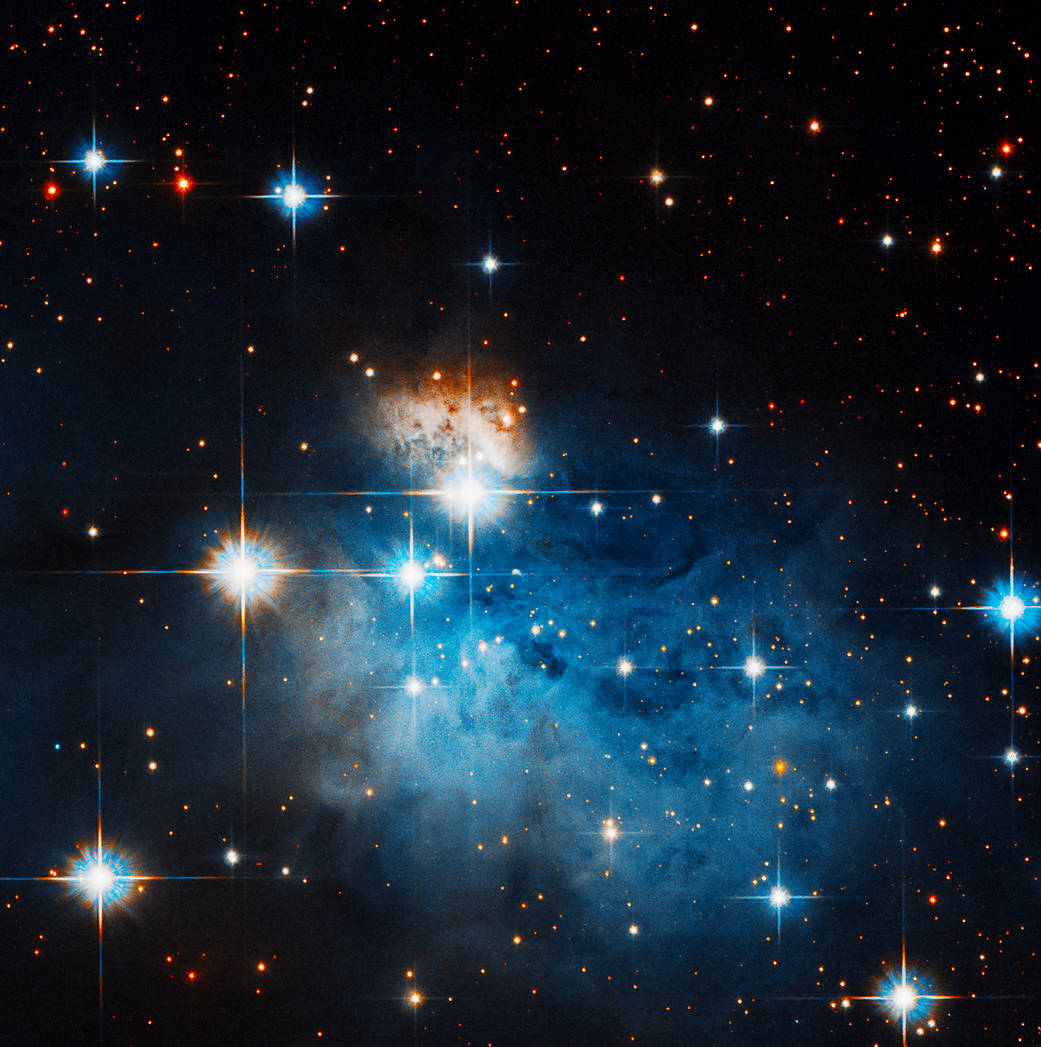This stunning image captures a small region on the edge of the inky Coalsack Nebula, or Caldwell 99. Caldwell 99 is a dark nebula — a dense cloud of interstellar dust that completely blocks out visible wavelengths of light from objects behind it. The object at the center of the image is a (much smaller) protoplanetary nebula. The protoplanetary nebula phase is a late stage in the life of a star in which it has ejected a shell of hydrogen gas and is quickly heating up. This stage only lasts for a few thousand years before the protoplanetary nebula’s central star reaches roughly 30,000 Kelvin. At this point, the central star is producing enough energy to make its surrounding shell of gas glow, becoming what’s known as a planetary nebula.
这张令人惊叹的图像捕捉到了墨黑的煤袋星云(Caldwell 99)边缘的一小块区域。Caldwell 99是一个暗星云——一个由星际尘埃组成的稠密云团,完全阻挡了它后面物体的可见光波长。图像中心的物体是一个(小得多)原行星状星云。原行星状星云阶段是恒星生命的后期阶段,在该阶段,恒星喷射出一层氢气,并迅速升温。这个阶段只持续了几千年,原行星状星云的中心恒星就会达到大约30,000开尔文。此时,中心恒星正在产生足够的能量,使其周围的气体壳发光,成为我们所知的行星状星云。
Caldwell 99 is a very prominent object in the southern night sky. On a clear night, it can be spotted easily with the naked eye as a dark patch, void of stars, next to the Southern Cross in the constellation Crux. It is easiest to spot in the Southern Hemisphere during the autumn. (Northern Hemisphere observers will want to be positioned near the equator and look for it in the springtime.)
Caldwell 99是南部夜空中一个非常突出的物体。在一个晴朗的夜晚,它很容易被肉眼发现,就像一个黑暗的斑块,没有星星,紧挨着星座核心的南十字。秋天在南半球最容易发现。(北半球的观测者则在春天的赤道附近观测到它。)
Caldwell 99 is located 600 light-years from Earth and is about 100 light-years across.
Caldwell 99距离地球600光年,直径约100光年。
Image Credit: NASA, ESA, and R. Sahai (Jet Propulsion Laboratory); Processing: Gladys Kober (NASA/Catholic University of America)
影像来源:NASA, ESA, and R. Sahai (Jet Propulsion Laboratory); Processing: Gladys Kober (NASA/Catholic University of America)



